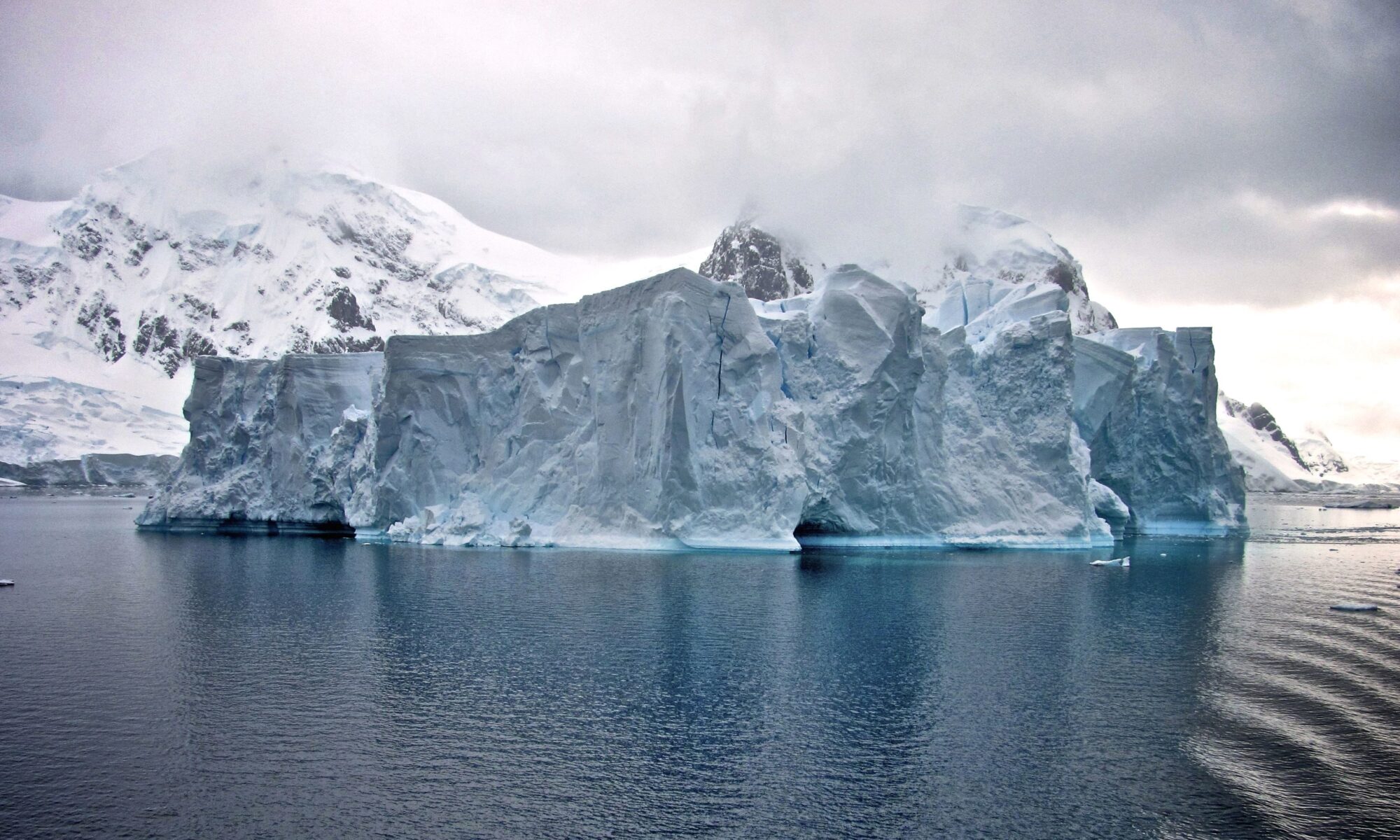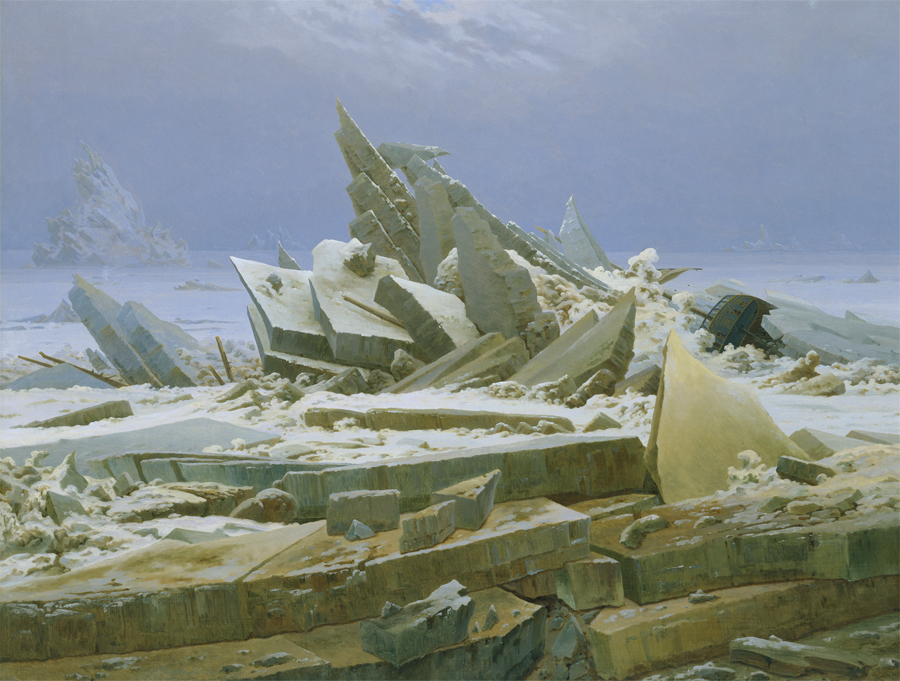German, 1774–1840
Sea of Ice, 1823–24
Oil on canvas,38 x 49.9 (96.7 x 126.9 cm)
Hamburger Kunsthalle, Germany
Caspar David Friedrich’s Sea of Ice, arguably the most famous polar painting, was partly inspired by Edward Parry’s Northwest Passage expedition in 1819–20. Although he never traveled to the Arctic, the artist sketched ice floes along Dresden’s Elbe River, which would freeze during winter.
Friedrich piles thick slabs of ice into the shape of an alpine peak. Its rocklike mass recalls cemetery gravestones. Emblems of death appear in the mast and barely visible hull of a ship crushed by the ice.
The Sea of Ice corresponds to Friedrich’s withdrawal from society and state of mind after his art became neglected. Many art historians have speculated on the painting’s meaning: its implications of human vulnerability, death, and potential redemption through faith. Some believe that its foreboding quality alludes to the clamp down on political freedom in Prince Metternich’s Germany. The significance of this painting resides in Friedrich’s introduction of a complex web of ideas into the iconography of Arctic landscapes.

